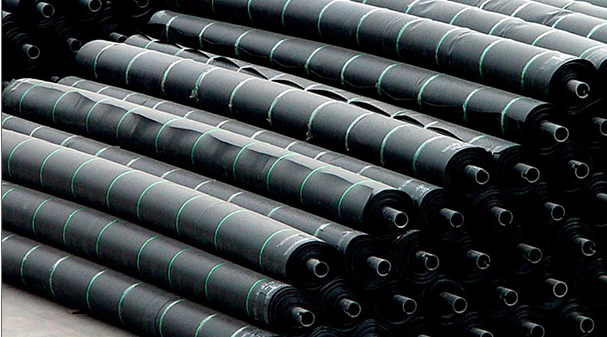- Understanding the Role of Geomembrane Liners in Waste Management
- Innovations in Geomembrane Liners for Water Management
- Geomembrane Liners: A Comprehensive Guide
- The Future of Geomembrane Liners in Civil Engineering
- Geomembrane Liners: Enhancing Landfill Stability
Manager:
WhatsApp:+86 177 0135 2670
Tel:+86 177 0135 2670
Email:marketing@okorder.com
Address:3rd Floor, No.2 Building, No.1 Sanlihe Road
The EPI Geomembrane: Guardian of Environmental Integrity
In the mosaic of environmental conservation, the EPI geomembrane is a silent sentinel standing as the guardian of our invaluable natural resources against pollution. My exploration into EPI – The Liner Company has brought to my attention how much their work on geomembranes have impacted the field. Since 1980, EPI has been developing superior Geotextiles and geomembranes which they are well-known for because of their reliability and innovation.
The Legacy of EPI: The Early Innovators in Environmental Safety
Beginning with a simple goal; to transform environment protection through geosynthetic materials, EPI has become an industry leader after four decades. Their products have helped solve problems that have arisen over time. More than just being depicted as products, these are symbols that represent EPI’s endeavor for cleaner safer environment.
EPI Geomembrane Applications in Different Environments
EPI geomembranes have various applications in different environmental settings. For instance, in landfill design, the company’s geotextiles form part of composite systems that line and cap landfill cells creating impermeable barrier against contaminants reaching groundwater aquifers. These are high-quality materials designed for long-lasting performance since they possess durability, chemical resistance and puncture resistance necessary for surviving hazardous leachate collection system.
Leachate Control by EPI: Guarding Groundwater
Ground water preservation is one key aspect of environmental stewardship where EPI geotextiles make a significant contribution. They are efficient in leachate control to sustain groundwater integrity. The properties described above make not only these geotextiles effectual but also sustainable approach to environmental management.
Action by means of which EPi’s Geomembrane Serve as a Remediation Tool
Environmental restoration projects take advantage of EPi’s geotextiles due to their versatility and excellent performance characteristics. Various applications such as leachate collection, erosion control and slope stability among others demand its adaptability and superior performance. The utilization of these geotextiles by EPI in these projects exemplifies their role in environmental protection and sustainability.
Choosing the Best EPI Geomembrane: A Personalized Method
By analogy with a knight choosing his armor, one should be very careful when selecting an appropriate EPI geomembrane for building purposes. It means deep insight into materials used, their characteristics and peculiarities of each particular case. The variety of material selection including thickness, ability to withstand hazardous conditions during installation and disposal process are considered by EPI’s guide provided for this purpose.
EPI Geomembranes at Heart
EPI’s geomembranes are made from different materials which have their own peculiar properties. For instance, High-Density Polyethylene (HDPE) is highly chemically resistant and durable making it suitable for landfill liners and mining applications. Linear Low-Density Polyethylene (LLDPE) is soft enough to take up complex forms easily because it is flexible. PVC has excellent malleability attributes hence easy to install while EPDM has good resistance against UV radiations that makes it ideal for uncovered projects.

Strengths of the Shield: Thickness and Durability
Thickness of an EPI geomembrane does not only indicate its dimensions but also shows how strong or long-lasting it could be. Thicker geomembranes afford greater puncture resistance, durability that is vital in heavy-duty installations. The anticipated construction duration term alongside specific exposure conditions will impact on the expected durability level needed for the project too.
Installation Considerations: The Art of Assembly
The overall cost and timeline of the project is definitely influenced by how easy it can be to install. PVC and LLDPE are well-known for their ease in handling and set up apart from HDPE which are rigid.
Environmental Impact: The EPI Commitment
EPI’s commitment to environmental protection is not limited to the production of geomembranes but extends further. They look at the potential impact of a geomembrane on local ecosystems as a result they encourage the use of materials that are environmentally friendly and meet industry standards.
Application-Specific Geomembrane Choices: Tailored Solutions
Among waste containment, HDPE is most popular for high chemical resistance and its long lasting quality. Regarding water management, LLDPE and PVC have been preferred when it comes to lining reservoirs, ponds, irrigation canals due to their flexibility and ease of installation.
In conclusion, this commitment by EPI – The Liner Company towards quality and innovation in geomembranes is like a beam of light shining in a field full dark clouds. Their geomembranes represent more than just obstacles; they embody the unshakable devotion of EPI towards saving our planet’s future generations. In view of environmental challenges that continue to confront us, EPI’s geomembrane stands as an evidence through human creativity ability as well as collective responsibility toward preservation of nature for generations yet unborn.
- Previous:Embracing The Versatility of BGM Geomembranes: An Odyssey Through Environmental Resilience
- Next:The Versatile Shield: An Exploration of the World of fPP Geomembranes






